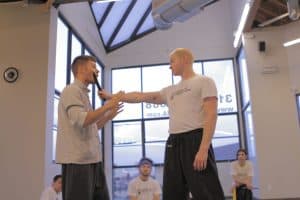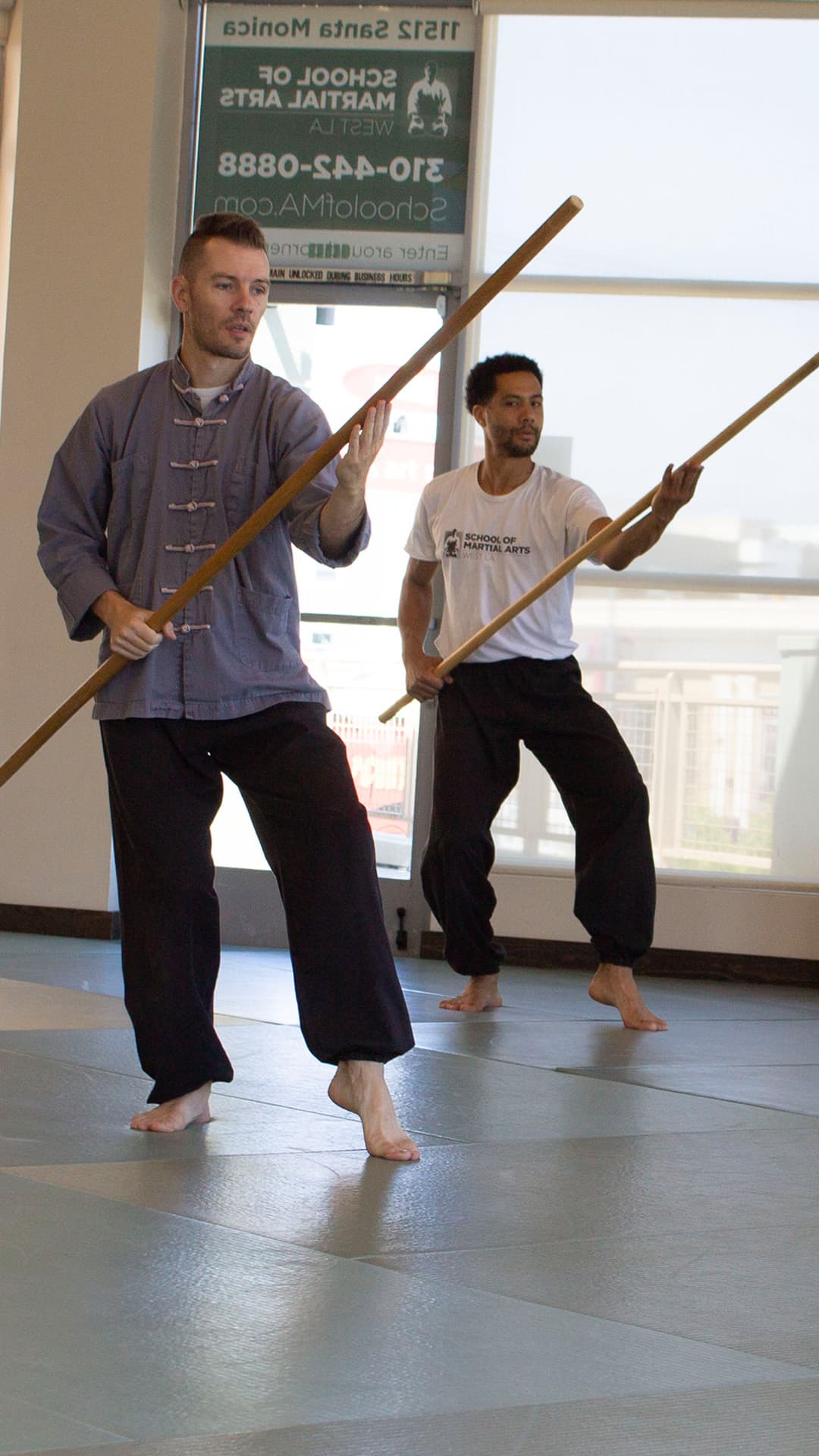Let’s start with what is not self defense.
Self defense is not kick box aerobics, Tae Bo, or Crossfit, where the idea is to move for workout’s sake with no internal understanding of why you’re doing what you’re doing. Sure, you work up a great sweat, but are you learning skills that are transferable to real life?
Self defense is not MMA or sport fighting. It is not competition Brazilian Jiu Jitsu, Muy Thai, or sport karate. It is not anything that takes place in an arena with rules and a referee. These are sport techniques that are often very effective in a ring or cage, but are ineffective when faced with a situation in real life
Self defense is not fantasy, like what you’ve seen in movies or graphic novels, where characters fly through the air or balls of Chi (energy) are whirled at enemies. These techniques and others are so fantastic, you wonder if they’re real. Most of the time they are not. Even the ones that are real take many years to master; you could learn how to defend against a hundred other techniques before training your body to withstand the impact of a lead pipe to the head.
So, what is self defense?
Usually the best course of action is to run. Real self defense is centered around one thing: staying safe. It is not about maximizing damage to an attacker, but minimizing damage to yourself. In some cases, for example when protecting someone else, takedowns and techniques for control might be used. But most often your only goal is to get away. Fast.
It is often said that the highest form of self defense is to cause the least amount of damage to an attacker, while avoiding damage yourself. Use only what is necessary to protect yourself and those around you. Real self defense is about keeping the peace and inflicting the least amount of damage on others. It teaches you compassion rather than fostering aggression. Of course this doesn’t mean you should stand idly by while someone attacks you. Defend yourself! Whether this means throwing, striking, breaking or diffusing anger with a joke depends on the situation. A martial artist doesn’t feel the need to prove him or herself. They simply do what needs to be done.
Many martial arts can be a very effective form of self defense. Not everyone practices this way. Some simply appreciate the aesthetics of ancient forms or use it for mental and physical health benefits, such as with Tai Chi. But if your intent is to learn self defense, you should be asking yourself, “Would these techniques work in real life?” Ask your teacher plenty of questions in order to understand the reasoning behind what you do. If he/she doesn’t have a good answer, one that makes sense to you, you might have to reevaluate whether you are learning effective self defense. It doesn’t necessarily mean that you’re wasting your time, just that you likely won’t be defending yourself with the techniques you’re repping.
How do you know you are learning practical self-defense?
Your physical techniques should cover all possible scenarios: one-on-one, multiple attackers, striking, joint locks, throws, ground fighting and defense against weapons. If you’re lucky, you can find all of these skills in a single school. If not, you may want to branch out to make yourself more well-rounded.
It’s not only important to learn practical physical techniques, but overarching concepts such as situations and places to avoid. Someone with a great understanding of self defense is less likely to walk through a deserted parking garage alone or enter other dangerous situations.
It is also important to elevate your mental acuity with techniques like meditation and breath control, both of which help you stay calm. Let’s say, someone holds a gun to your chest and you get excited to use a technique that you’ve been practicing. You start fumbling with the gun and end up with a hole in you. If you know that the first thing to do is breathe and wait for the attacker’s demand, in most situations you will get away safely. Many times an attacker doesn’t feel the need to harm you; they simply want your money. It just isn’t worth it to fight a weapon for your wallet (think of the hospital bill from a bullet hole). Toss it on the ground and run the other way.
No matter what style of martial arts or self defense system you practice, this internal part of your practice is at least as important as the physical. Make sure, if you haven’t already, to start practicing breathing exercises, meditation and mindfulness. These will put you in a mental state to actually be able to use the techniques you’ve been repping. Not only does meditation help keep you calm in times of crisis but it also checks your ego. If someone insults or provokes you, you’re less likely to raise your fists and more likely to just let it go. Crisis avoided.
Most importantly, don’t just zombie through class. Regularly ask your teacher questions and make sure you understand the answers. You may just save your own life or a loved one someday.




